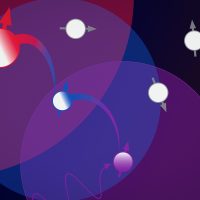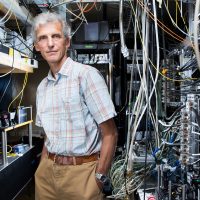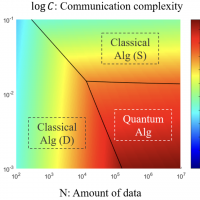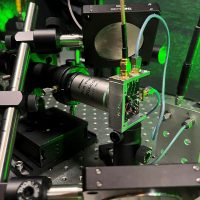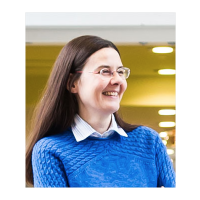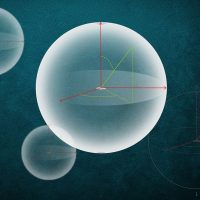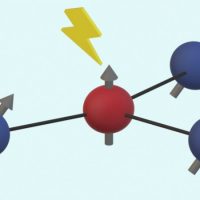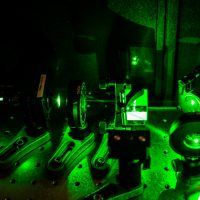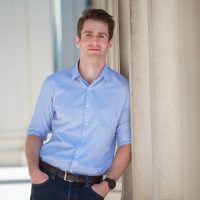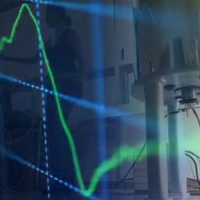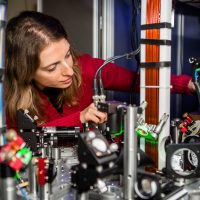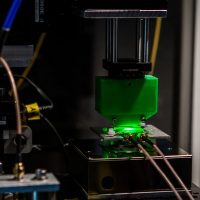Biography:
Ph.D., Nuclear Science and Engineering, Massachusetts Institute of Technology, 2006
M.S., Applied Physics, École Centrale Paris, 2000
B.S/M.S., Nuclear Engineering, Politecnico di Milano, 2000
- G. Wang, W. Xu, C. Li, V. Vuletic, and P. Cappellaro. Individual-atom control in array through phase modulation. Phys. Rev. Applied, 23(024072), 2025.
- A. Ungar, P. Cappellaro, A. Cooper, and W. Sun. Control of an Environmental Spin Defect beyond the Coherence Limit of a Central Spin. PRX Quantum February 2024.
- A. Stasiuk, P. Peng, G. Heller, and P. Cappellaro. Frame Change Technique for Phase Transient Cancellation. Journal of Magnetic Resonance, 362(107688), 2024.
- G. Wang, M. Chen, C. Li, P. Cappellaro, A. R. Barr, H. Xu, and J. Li. Characterizing temperature and strain variations with qubit ensembles for their robust coherence protection. Phys Rev Lett, 131(043602), July 2023.
- P. Peng, P. Cappellaro, B. Ye, and N. Yao. Exploiting disorder to probe spin and energy hydrodynamics. Nature Physics 2023.
- A. Stasiuk and P. Cappellaro. Observation of a Prethermal U(1) Discrete Time Crystal. Phys Rev X, 13(041016), October 2023.
- G. Wang, P. Cappellaro, Haowei Xu, Changhao Li, Hua Wang, Hao Tang, Ariel Rebehak Barr, and Ju Li. Two-Photon Interface of Nuclear Spins Based on the Optonuclear Quadrupolar Effect. Phys Rev X, 13(011017), February 2023.
- M. Chen, C. Li, P. Cappellaro, G. Palumbo, Y.-Q. Zhu, and N. Goldman. A synthetic monopole source of Kalb-Ramond field in diamond. Science, 375(6584):1017-1020, March 2022.
- W. Sun and P. Cappellaro. Self-consistent noise characterization of quantum devices. Phys Rev B, 106(155413), 2022.
- P. Peng, P. Cappellaro, X. Huang, C. Yin, L. Joseph, and C. Ramanathan . Deep reinforcement learning for quantum Hamiltonian engineering. ArXiv 2021.
- P. Peng, P. Cappellaro, C. Yin, X. Huang, and C. Ramanathan. Observation of Floquet prethermalization in dipolar spin chains. Nat. Phys. 2021.
- G. Wang, C. Li, and P. Cappellaro. Observation of symmetry-protected selection rules in periodically driven quantum systems. Phys. Rev. Lett., 127(140604), September 2021.
- P. Peng, P. Cappellaro, C. Yin, X. Huang, and C. Ramanathan. Prethermal quasiconserved observables in Floquet quantum systems. Physics Rev B, 103(054305), 2021.
- C. Li, Y.-X. Liu, P. Cappellaro, and T. Li. Effective routing design for remote entanglement generation on quantum networks. ArXiv 2020.
- D. Layden, M. Chen, and P. Cappellaro. Efficient Quantum Error Correction of Dephasing Induced by a Common Fluctuator. Phys. Rev. Lett., 124(020504), 2020.
- P. Cappellaro, S. Hernández-Gómez, S. Gherardini, F. Poggiali, F. S. Cataliotti, A. Trombettoni, and N. Fabbri. Experimental test of exchange fluctuation relations in an open quantum system. Phys. Rev. Research, 2(023327), 2020.
- Y.-X. Liu, Z. Li, A. Ajoy, P. Cappellaro, and J. Hines. High-fidelity Trotter formulas for digital quantum simulation. Phys Rev A, 102(010601), 2020.
- A. Cooper, W. Sun, J-C. Jaskula, and P. Cappellaro. Identification and Control of Electron-Nuclear Spin Defects in Diamond. Phys. Rev. Lett., 124(083602), 2020.
- P. Cappellaro, C. M. Sánchez, A. K. Chattah, K. X. Wei, L. Buljubasich, and H. M. Pastawski. Perturbation Independent Decay of the Loschmidt Echo in a Many-Body System. Phys. Rev. Lett., 124(030601), 2020.
- A. Sone, Y.-X. Liu, and P. Cappellaro. Quantum Jarzynski equality in open quantum systems from the one-time measurement scheme. Phys. Rev. Lett., 125(060602), August 2020.
- H. Zhou, J. Choi, S. Choi, R. Landig, P. Cappellaro, H. Knowles, H. Park, M. Lukin, A. Douglas, J. Isoya, F. Jelezko, S. Onoda, and H. Sumiya. Quantum Metrology with Strongly Interacting Spin Systems. Phys. Rev. X, 10(031003), 2020.
- M. Chen, Y.-X. Liu, D. Layden, P. Cappellaro, and Genyue Liu. Repetitive readout enhanced by machine learning. Machine Learning: Science and Technology, 1(1), 2020.
- D. Layden, P. Cappellaro, and L. R. Huang. Robustness-optimized quantum error correction. IOP Science 2020.
- K. Xuan Wei, P. Cappellaro, C. Sanchez, A. Cattah, L. Buljubasich, and H. Pastawski. Emergent perturbation independent decay of the Loschmidt echo in a many-spin system studied through scaled dipolar dynamics. ArXiv February 2019.
- K. Xuan Wei, P. Peng, P. Cappellaro, O. Shtanko, I. Marvian, S. Lloyd, and C. Ramanathan. Emergent prethermalization signatures in out-of-time ordered correlations. Phys. Rev. Lett., 123(090605), 2019.
- A. Cooper, W. Sun, J-C. Jaskula, and P. Cappellaro. Environment-assisted Quantum-enhanced Sensing with Electronic Spins in Diamond. Phys. Rev. Applied , 12(044047), 2019.
- Y. Liu, A. Ajoy, P. Cappellaro, and J. Hines. Quantum Interpolation for digital quantum simulation. ArXiv March 2019.
- A. Ajoy, U. Bissbort, P. Cappellaro, and D. Poletti. Selective decoupling and Hamiltonian engineering in dipolar spin networks. Phys. Rev. Lett, 122(013205), 2019.
- L. Marseglia, K. Saha, A. Ajoy, D. Englund, P. Cappellaro, T. Schröder, F. Jelezko, R. Walsworth, J. L. Pacheco, D. L. Perry, and E. S. Bielejec. Bright nanowire single photon source based on SiV centers in diamond. Optics Express, 26:80-89, 2018.
- P. Peng, Z. Li, K. Xuan Wei, P. Cappellaro, and H. Yan. Comparing many-body localization lengths via non-perturbative construction of local integrals of motion. Phys. Rev. B, 100(214203), December 2018.
- K. Xuan Wei, P. Cappellaro, and C. Ramanathan . Exploring Localization in Nuclear Spin Chains. Phys. Rev. Lett. , 070501, 2018.
- P. Cappellaro, S. Hernández-Góme, F. Poggiali, and N. Fabbri. Noise spectroscopy of a quantum-classical environment with a diamond qubit. Phys Rev. B, 98(214307), December 2018.
- M. Chen, W. Sun, K. Saha, J-C. Jaskula, and P. Cappellaro. Protecting solid-state spins from strongly coupled environment. ArXiv 2018.
- A. Sone, P. Cappellaro, and Q. Zhuang . Quantifying precision loss in local quantum thermometry via diagonal discord. ArXiv 2018.
- M. Hirose and P. Cappellaro. Time-optimal control with finite bandwidth. Quantum Information Processing, 17(88), 2018.
- D. Layden and P. Cappellaro. Error-corrected quantum sensing with parallel signal and noise. ArXiv 2017.
- A. Sone and P. Cappellaro. Hamiltonian identifiability assisted by a single-probe measurement. Phys. Rev. A, 95(022335), February 2017.
- A. Ajoy, Y.-X. Liu, K. Saha, L. Marseglia, J-C. Jaskula, U. Bissbort, and P. Cappellaro. Quantum interpolation for high-resolution sensing. Proc. Nat. Acad. Sc., 114(9), February 2017.
- P. Cappellaro, C. L. Degen, and F. Reinhard . Quantum sensing. Rev. Mod. Phys., 89(035002), 2017.
- A. Ajoy, Y.-X. Liu, and P. Cappellaro. DC Magnetometry at the T2 Limit.
- K. Xuan Wei, P. Cappellaro, and C. Ramanathan. Exploring Localization in Nuclear Spin Chains.
- I. Lovchinsky, A. Sushkov, E. Urbach, P. Cappellaro, H. Park, M. Lukin, L.M. Pham, S.J. DeVience, F. Casola, E. Bersin, A. Yacoby, R.L. Walsworth, and J. Lee. NMR Technique for Determining the Depth of Shallow Nitrogen-Vacancy Centers in Diamond. Phys. Rev. B, 93:045425, 2016.
- M. Hirose and P. Cappellaro. Measurement of transverse hyperfine interaction by forbidden transitions. Phys. Rev. B, 1503:08858, 2015.
- C. Aiello and P. Cappellaro. Time-optimal control by a quantum actuator. Phys. Rev A, 91, 2015.
- C. Aiello, P. Cappellaro, M. Allegra, and X. Wang. Algebraic synthesis of time-optimal unitaries in SU (2) with alternating controls. arXiv, 1410:5641, 2014.
- C. Aiello and P. Cappellaro. The NV center as a quantum actuator: time-optimal control of nuclear spins. arXiv, 1410:5641, 2014.
- C. Aiello and P. Cappellaro. Time-optimal control by a quantum actuator. Physical Review, A 91:042340, 2014.
- P. Cappellaro, C. Belthangady, L.M. Pham, K. Arai, D. Le Sage, and R.L. Walsworth. Dressed-State Resonant Coupling between Bright and Dark Spins in Diamond. Phys. Rev. Lett, 110:157601, 2013.
- E. Magesan and P. Cappellaro. Experimentally efficient methods for estimating the performance of quantum measurements. ArXiv:1301.5037 2013.
Sun November 20, 2022
Communication-efficient quantum algorithm for distributed machine learning
News type:
Sun November 20, 2022
Quantum sensor can detect arbitrary frequency electromagnetic signals
News type:
Thu September 7, 2017
CUA Researchers Featured on Mashable Video: These scientists are proving Einstein wrong
News type:
Tue February 7, 2017 6:00 pm
Paola Cappellaro presents at Soap Box Series at the MIT Museum
Location:MIT Museum
Paola Cappellaro, Massachusetts Institute of Technology
Event type:

